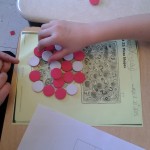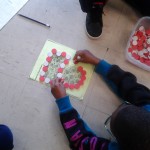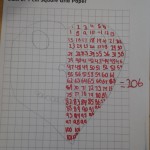As Grade 3 and 6 teachers, we explored the use of a diagnostic tool (Leaps and Bounds) as a way to support students with gap-closing strategies. We identified a need for a clear diagnostic to help us (1) better identify areas of need/gaps students had in learning within each strand, (2) help to close those gaps/address those areas of need, and (3) reflect on trajectories (for tools/manipulatives) that students have in their knowledge backpack.
Team Members
Laura Inglis
TDSB
Rosslyn Berot
TDSB
Tina Ginglo
TDSB
Professional Learning Goals
- purchase and receive training on how to use the resource Leaps and Bounds
- explore the use of the diagnostic/gap closing tool (Leaps and Bounds)
- assess the effectiveness of Leaps and Bounds as an accurate way to assess student needs (and close gaps in learning)
- explore how to use gap closing tools to help organize/support guided math groups
- collaborate to create trajectory charts, indicating when various math tools and manipulatives are introduced to students/familiar to students
Activities and Resources
- purchased Leaps and Bounds and received training on how to use it from the board math coach/Nelson representative
- administered Leaps and Bounds to students, and assessed student work together to determine next steps for students/small groups
- collaborated on creating a tracking system for assessment data that was easy to read and provided essential information on student progress
- shared information on how to support students in large and small math groups (using pathway materials from Leaps and Bounds and different organizational structures within the classroom)
- met regularly to discuss student progress and teacher needs
- used lesson study as a means of observing student progress, identifying needs and next steps
- created trajectories for math tools/manipulatives needed to support student learning (through direct teaching and which ones students will have in their knowledge backpack)
Unexpected Challenges
We wish all grade team members had been included on the grant and participated in the project. Unfortunately, we have had many staff changes in the building this year, and even a timetable change for the grade 6 team (changing math from a rotary subject to a core subject). This created many complications in getting the project started (after the initial application).
A lack of supply teachers available to cover all release time was also an issue. Beginning the project earlier in the year (based on the original timeline from OTF) would have been preferred.
Enhancing Student Learning and Development
We believe that Leaps and Bounds will be invaluable to our teachers/school in the future. Based on CAT4 testing that is done by our school, our students typically score two to three grade levels below the Canadian norm. We receive a general report about how students/classes performed within each strand, but nothing that breaks down what skills/strategies students are having difficulty with. By administering a diagnostic assessment such as Leaps and Bounds at the beginning of each strand, teachers will have a greater sense of student needs, areas of need to target, and how to create math groups for guided instruction and support classes.
Sharing
Originally we had planned to:
- provide project updates to teachers at each staff meeting (instead we shared updates with our grade team/division teams and those staff who expressed interest)
- share created materials on our school’s internal shared drive (instead we are creating a Google folder for all teachers to access)
- share final project with parents and staff at year-end parent Council and team meetings, plus the final project will also be shared at Superintendent’s family of school leadership team meeting (due to job action this is not possible at this time, so we are hoping to do this during the 2015/2016 school year)
Our target audience is the other teachers at our school to get everyone on the same page and using a similar diagnostic that we think is available and provides the teacher with meaningful data. We definitely need to purchase more resources for teachers to use (one per teacher is ideal) and then support those teachers through a similar journey that we had, exploring the resource.
Project Evaluation
Our project was successful in the following ways:
- we all learned about a new assessment/diagnostic tool
- we all felt it was a great resource that will be very beneficial to the teachers/students in our school (we all want to use it in the future)
- we really valued the time to meet and be involved in professional discourse (around a topic of our choosing)
In the future we would like to:
- share the project with more teachers (as plans to share in a more meaningful way we halted due to work action and a large number of staff leaving the school to work elsewhere)
- purchase more resources for all teachers to have access to books/electronic copies at all times (one per teacher is needed to plan effectively)
- include more teachers in our future projects to build greater capacity and a more collaborative learning environment, and support more teachers in learning about new resources/support models
Resources Used
Leaps and Bounds resources from Nelson
Resources Created
These resources will open in your browser in a new tab, or be downloaded to your computer.










